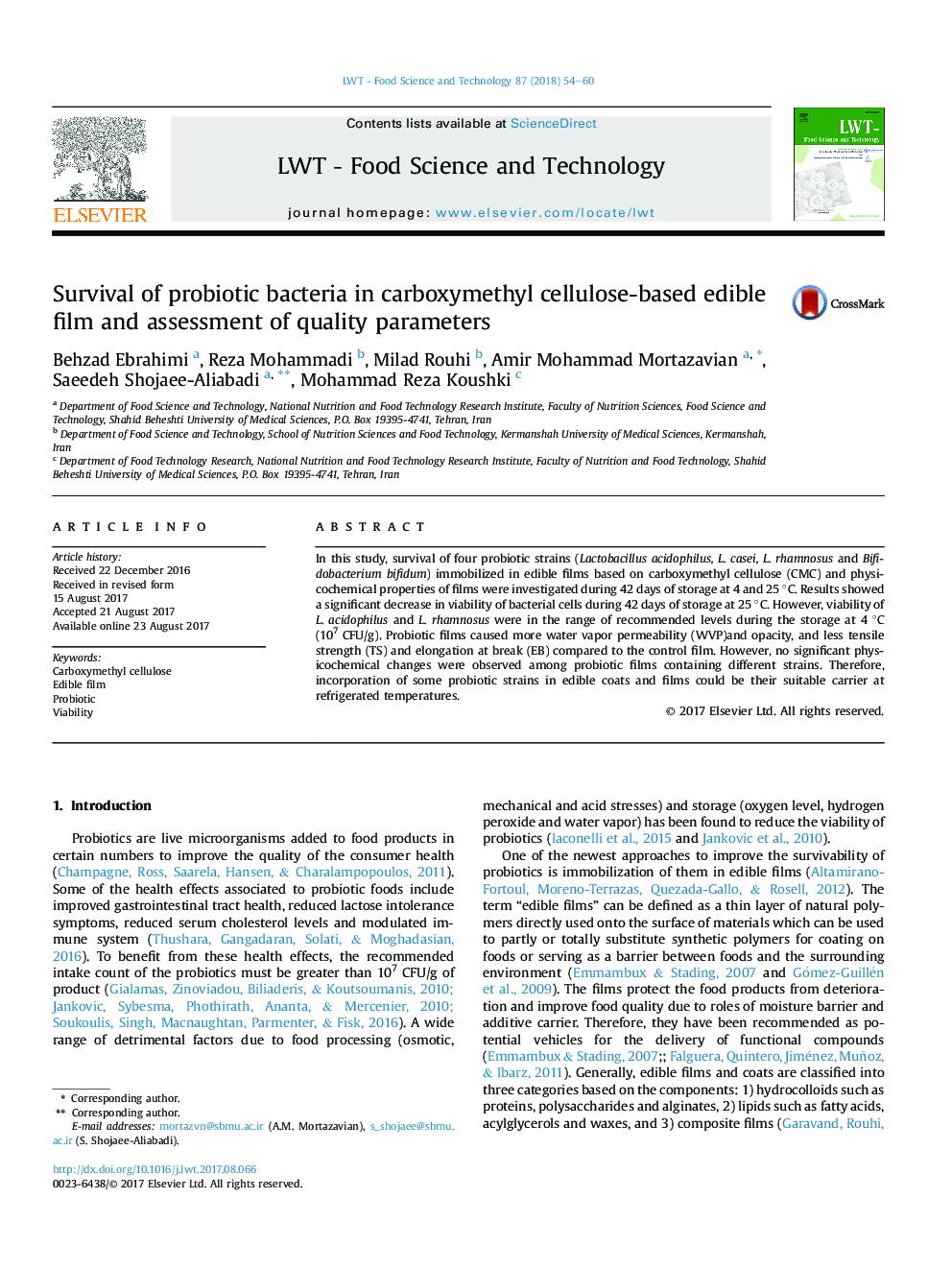| کد مقاله | کد نشریه | سال انتشار | مقاله انگلیسی | نسخه تمام متن |
|---|---|---|---|---|
| 5768590 | 1628512 | 2018 | 7 صفحه PDF | دانلود رایگان |
- Viability of L. acidophilus and L. rhamnosus were in the range of recommended levels at the end of storage at 4 °C.
- Probiotic films showed less water vapor permeability (WVP) and opacity than the control film.
- Addition of probiotics to edible CMC films decreased tensile strength (TS) and elongation at break (EB).
In this study, survival of four probiotic strains (Lactobacillus acidophilus, L. casei, L. rhamnosus and Bifidobacterium bifidum) immobilized in edible films based on carboxymethyl cellulose (CMC) and physicochemical properties of films were investigated during 42 days of storage at 4 and 25 °C. Results showed a significant decrease in viability of bacterial cells during 42 days of storage at 25 °C. However, viability of L. acidophilus and L. rhamnosus were in the range of recommended levels during the storage at 4 °C (107 CFU/g). Probiotic films caused more water vapor permeability (WVP)and opacity, and less tensile strength (TS) and elongation at break (EB) compared to the control film. However, no significant physicochemical changes were observed among probiotic films containing different strains. Therefore, incorporation of some probiotic strains in edible coats and films could be their suitable carrier at refrigerated temperatures.
Journal: LWT - Food Science and Technology - Volume 87, January 2018, Pages 54-60
